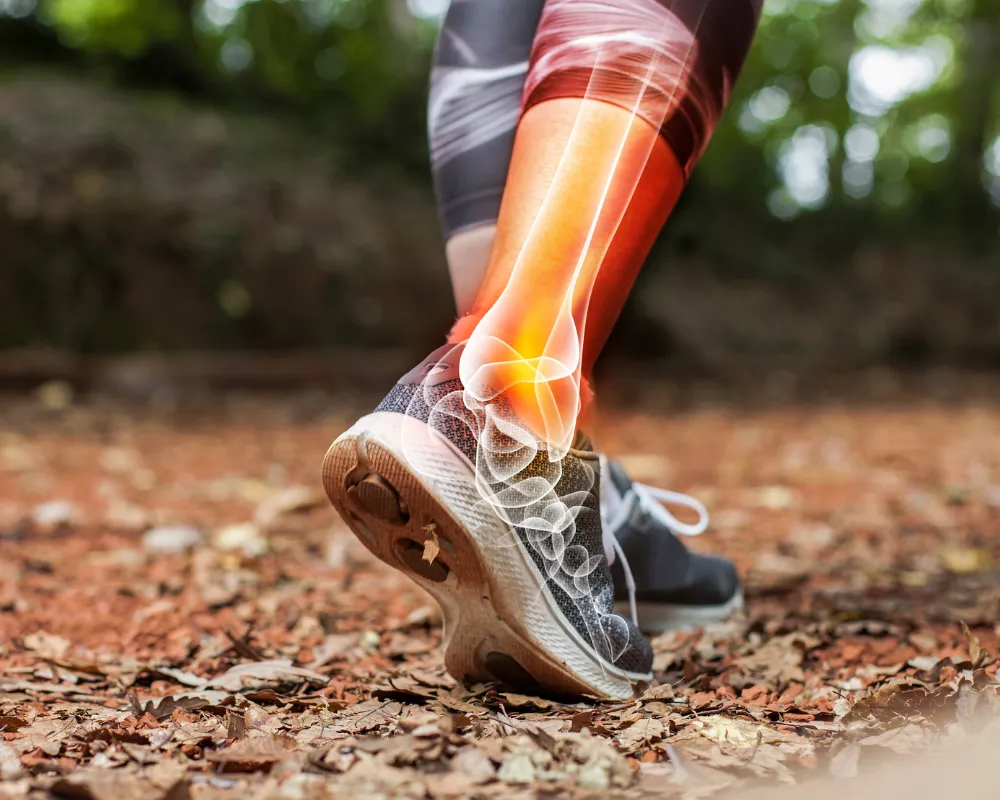Sports Injuries

Understanding Sports Injuries: A Guide to Getting Back in the Game
Hey there! If you’re active in sports or just love staying fit, you’ve probably heard about sports injuries. They can happen to anyone, from weekend warriors to pro athletes. As a holistic chiropractor in Lutz, Florida, I see a lot of people dealing with these issues, and I’m here to help you understand them better. In this article, we’ll break down what sports injuries are, their common symptoms, what causes them, how doctors figure them out, and the best ways to treat them. I’ll keep things simple and straightforward, like chatting with a friend, so you can feel confident about taking care of your body.
What Are Sports Injuries?
Sports injuries are basically any kind of harm that happens to your body while you’re playing sports, exercising, or doing physical activities. They can affect muscles, bones, joints, tendons (which connect muscles to bones), or ligaments (which connect bones to other bones). Think of your body like a well-oiled machine – when one part gets hurt, it can throw everything off balance.
These injuries come in two main types: acute and overuse. Acute injuries happen suddenly, like twisting your ankle during a soccer game. Overuse injuries build up over time, such as sore knees from running too much without rest. Common examples include sprains (when ligaments stretch too far), strains (when muscles or tendons get pulled), fractures (broken bones), dislocations (when bones pop out of place), and concussions (injuries to the brain from a hit to the head).
The good news is that most sports injuries can heal with the right care. But ignoring them can lead to bigger problems down the road. That’s why it’s important to listen to your body and seek help early.
Common Symptoms of Sports Injuries
Symptoms are the signs your body gives you that something’s wrong. They can vary depending on the injury, but here are some of the most common ones:
- Pain: This is the big one. It might be sharp and sudden, like a stab, or dull and achy. Pain often gets worse when you move the hurt area.
- Swelling: The injured spot might puff up because your body sends extra fluid to protect it. It can look red and feel warm to the touch.
- Bruising: You might see black-and-blue marks from broken blood vessels under the skin.
- Limited Movement: It could be hard to bend, stretch, or put weight on the area. For example, a sprained ankle might make walking tough.
- Weakness or Instability: The injured part might feel wobbly or like it can’t hold you up.
- Numbness or Tingling: This happens if nerves are involved, like in a pinched nerve from a back injury.
For head injuries like concussions, watch out for headaches, dizziness, confusion, nausea, or trouble remembering things. If you notice any of these after a bump to the head, get checked out right away – safety first!
Remember, symptoms can show up right after the injury or sneak up on you days later. If something doesn’t feel right, don’t push through it.
What Causes Sports Injuries?
Sports injuries don’t just happen out of nowhere; there are usually reasons behind them. Understanding the causes can help you prevent them in the future.
One big cause is accidents or impacts. This includes falls, collisions with other players, or getting hit by equipment like a ball or bat. For instance, tackling in football can lead to shoulder dislocations.
Overuse is another common culprit. When you repeat the same motion too often without enough rest, your body gets worn down. Runners might get shin splints from pounding the pavement every day, or tennis players could develop elbow pain from swinging the racket.
Poor technique or form plays a role too. If you’re not using the right posture or movements, it puts extra stress on certain parts of your body. Lifting weights the wrong way might strain your back.
Not warming up or cooling down properly is a sneaky cause. Your muscles need to get ready for action, like stretching before a game, or they can tear more easily.
Other factors include wearing old or wrong-sized gear, like shoes that don’t support your feet, or playing on uneven surfaces. Even things like not drinking enough water or being too tired can make injuries more likely because your body isn’t at its best.
Lastly, sometimes it’s just bad luck, but building strength and flexibility can lower your risks.
How Are Sports Injuries Diagnosed?
Diagnosing a sports injury means figuring out exactly what’s wrong so you can treat it right. It starts with talking to a doctor or chiropractor about what happened and how it feels.
They’ll do a physical exam, checking for swelling, bruises, and how well you can move. They might ask you to walk, bend, or push against their hand to test strength.
If needed, they use tools like X-rays to see bones and check for breaks. MRIs (magnetic resonance imaging) show soft tissues like muscles and ligaments in detail. Ultrasounds can look at tendons and blood flow.
For concussions, doctors use special tests to check balance, memory, and reaction time.
As a holistic chiropractor, I also look at your whole body – not just the hurt spot. I check your spine alignment and how you move overall, because sometimes an injury in one place comes from imbalances elsewhere.
The goal is to get a clear picture so treatment can start quickly and safely.
Treatment Options for Sports Injuries
Treating sports injuries is all about reducing pain, healing the damage, and getting you back to what you love. There are many options, from simple home care to professional help.
First, follow the RICE method: Rest (give it a break), Ice (to reduce swelling), Compression (wrap it snugly), and Elevation (keep it raised above your heart). This works great for minor sprains and strains.
Pain relievers like ibuprofen can help with discomfort, but don’t overdo it – talk to a doctor first.
Physical therapy is awesome for rebuilding strength and flexibility. Therapists guide you through exercises tailored to your injury.
For more serious cases, surgery might be needed, like fixing a torn ligament. But that’s not always the first choice.
Now, let’s talk holistic approaches, which I specialize in as a chiropractor in Lutz, Florida. Chiropractic care focuses on your body’s natural ability to heal. I use gentle or firm adjustments depending on patient’s comfort level and needs. When we align your spine and joints, it can improve range of motion, reduce pain, and speed up recovery without drugs or surgery.
Other holistic options include massage to loosen tight muscles, acupuncture to ease pain, and nutrition advice to support healing with anti-inflammatory foods like fruits and veggies.
Preventing future injuries is key too – I can teach you proper warm-ups, strengthening exercises, and ways to improve your form.
No matter the treatment, patience is important. Healing takes time, but with the right plan, you’ll be stronger than before.
In summary, sports injuries are common but manageable. By knowing the signs, causes, and treatments, you can stay safe and active. If you’re in Lutz, Florida, and dealing with a sports injury, come see me – as a holistic chiropractor, I’m dedicated to helping you heal naturally and get back in the game. Feel free to reach out; your health is worth it!

Office Hours
Monday
9:30am – 1:00pm
3:00pm – 6:00pm
Tuesday
9:30am – 1:00pm
Wednesday
9:30am – 1:00pm
3:00pm – 6:00pm
Thursday
9:30am – 1:00pm
3:00pm – 6:00pm
Friday, Saturday & Sunday
Closed

2540 Green Forest Ln, Unit 102
Lutz, FL 33558
P: (813) 575-3550
manager@huntholistic.com
See What Our Patients Are Saying

Connect With Hunt Holistic Chiropractic!
We are committed to your well being and helping you overcome your health challenges. Our team has decades of combined experience and our focus is on understanding your unique health challenges and working with you to help you achieve optimal health.
Hunt Holistic Chiropractic is your trusted chiropractor serving all of Florida’s Gulf Coast. You can learn more about us here. If you have questions or would like to schedule a visit, you can contact us here. And, finally, feel free to browse our Frequently Asked Questions resource section for more information about different services and conditions.